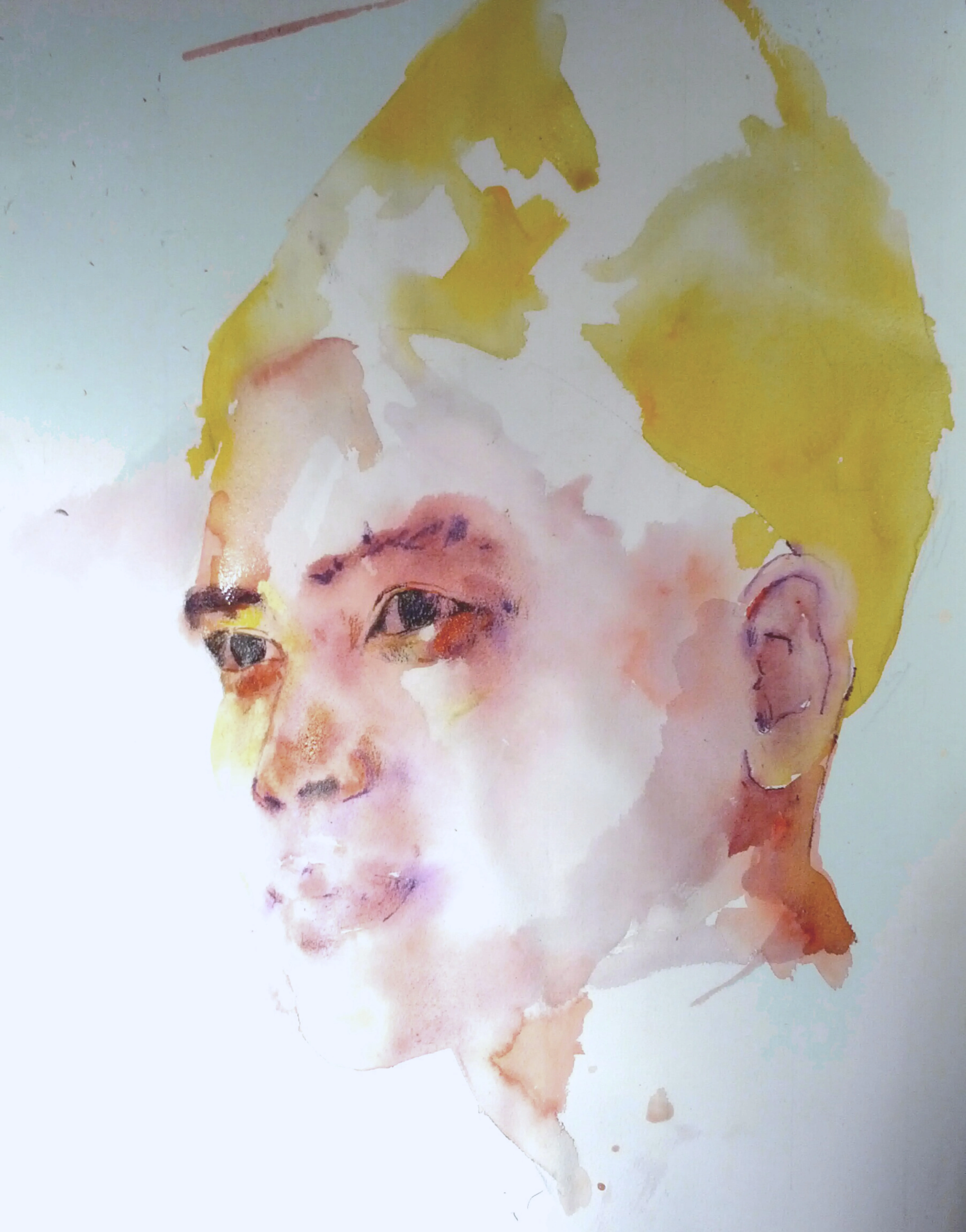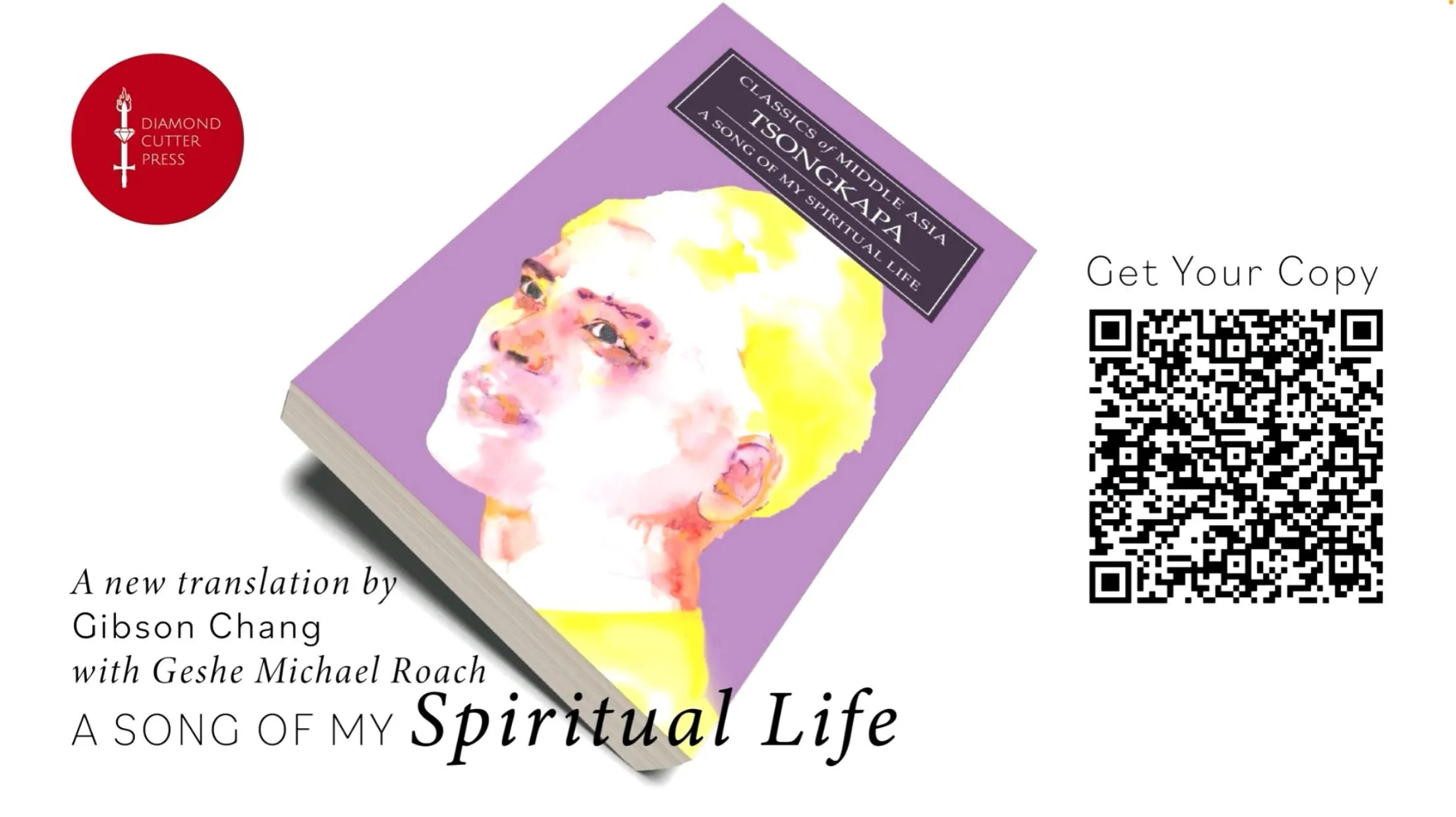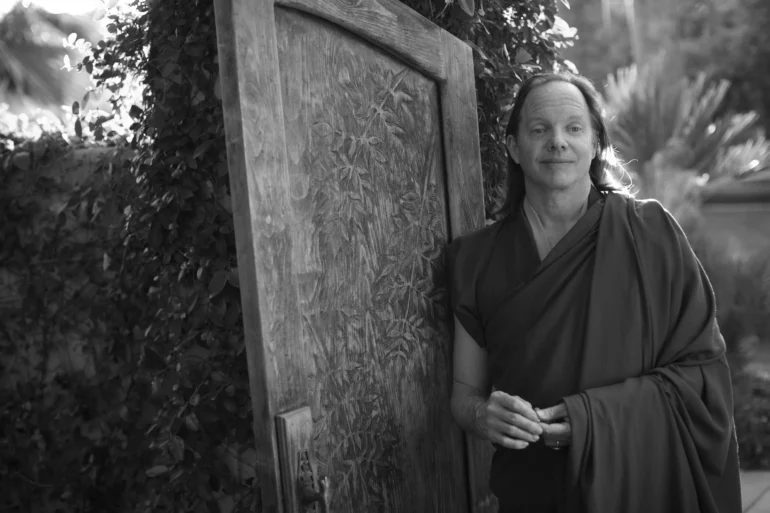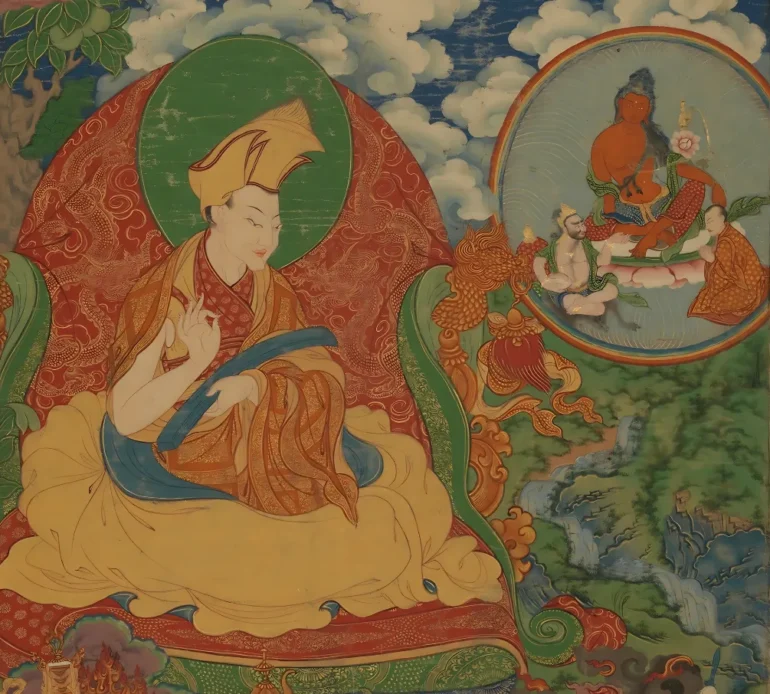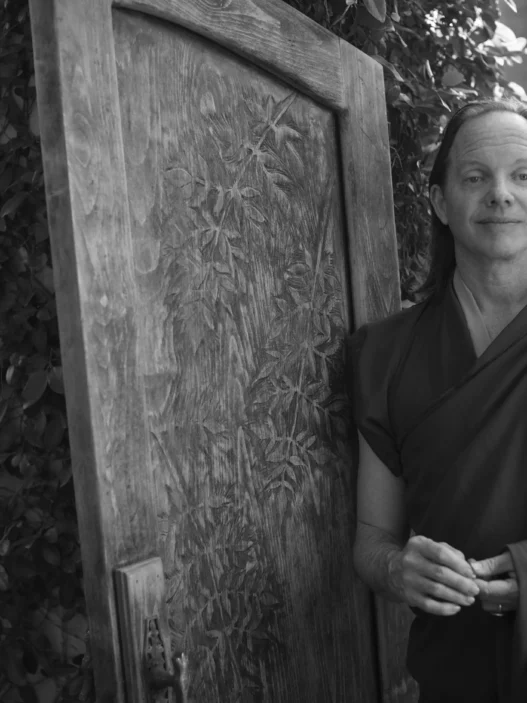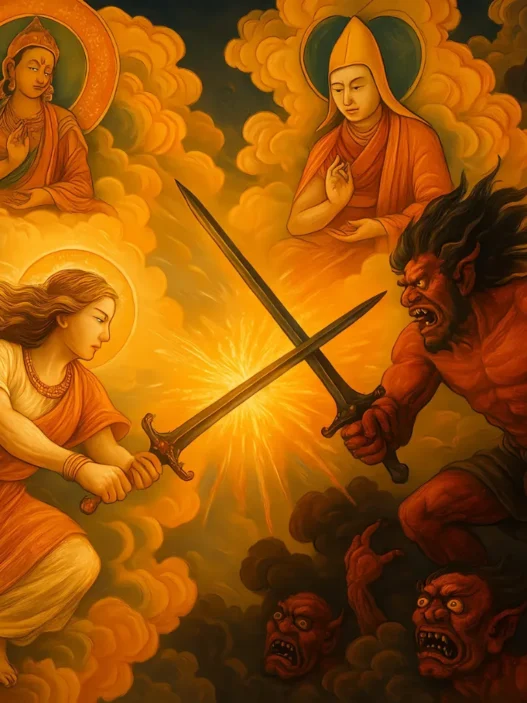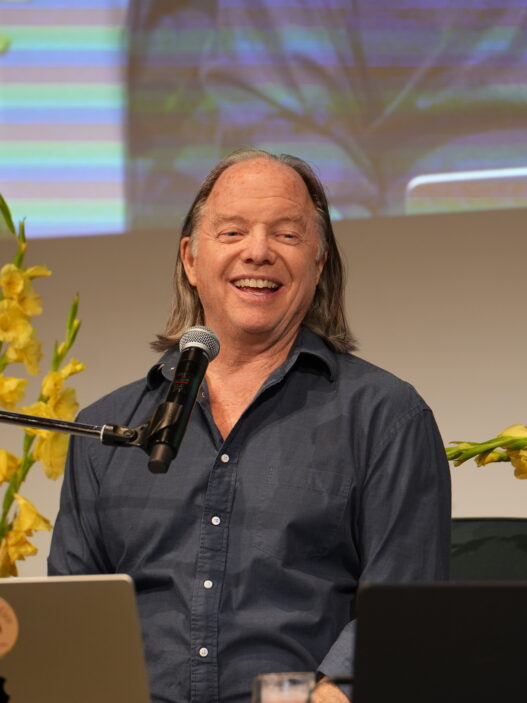《我修行路上的心聲》 宗喀巴大師著 | 格西麥可·羅區授課
毫不誇張地說,藏傳佛教大師宗喀巴(1357–1419)是有史以來最偉大的佛教著作家。他留下了超過325部著作–總計超過12,000頁–涵蓋整個傳統佛教教法的廣泛內容。然而,在這無數的卷冊之中,《我修行路上的心聲》格外突出。這是他以自己的聲音娓娓道來,回顧他所走過的修行之路,並邀請他人一同前行的唯一作品。
這部短篇著作也被稱為Nyamgur(修行心得歌),或Lam Rim Dudun(道次第略釋),意思是「成佛之道的簡略呈現」。在短短數頁中,宗喀巴大師勾勒出完整的修行結構,並非出於抽象理論,而是基於他自身深刻的實修經驗。而當宗喀巴大師書寫一頁,其內蘊涵的深義如同百頁之多–經常是那種讓普通讀者需要停下來沉思許久的句子,只為理解其中蘊藏的細膩與深度。這部文本可能寫於他晚年在甘丹寺修行的最後十年間,是他數世修行智慧的結晶,凝練於幾首強而有力的偈頌中。
本教法依據傳統所說的「三士道」架構來展開:下士為了避免未來世的痛苦而修行;中士尋求永遠斷除痛苦之道;而上士則承擔起解救一切眾生離苦得樂的個人責任,無論他們身在何處。這些動機的發展,並非出於盲信,而是基於誠實自省與理性思維的推導。這是一條以邏輯、慈悲與清明為基礎的道路。
宗喀巴大師的訊息簡單卻深邃:凡欲獲得解脫之人,必須首先認識到生命並不止於今世,並對它的走向負起責任。而最有能力的修行者,則將目光超越自身未來,關注所有眾生的苦難–甚至包括那些尚未相識的眾生–並承擔起幫助所有有情眾生的使命。正是這份廣大動機,使《我修行路上的心聲》歷久彌新、充滿力量。本課程由格西麥可·羅區教授,將這部罕見文本的深意展現於現代學人面前。
當你準備深入道次第的每一階段時,還有無數極為精細的著作等你來細讀。我們推薦格西麥可長達十四年的道次第課程教學 — 可於知識庫網站免費獲得。
與一位具德導師一同學習這部簡短卻完整的作品,將開啟通往世上最深刻修行道之一的大門:一條由慈悲與洞見所引導的生活之道,正如西藏最偉大的導師親身實踐與傳授的一樣。
視頻
是一個視頻播放列表,從最近發布的課程開始。只需點擊觀看下一個視頻,即可觀看本系列的其他視頻。
音頻
宗喀巴大師是誰?
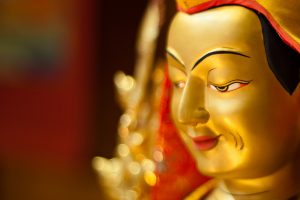 宗喀巴大師(1357–1419)是歷史上最偉大的佛教思想家、作家與修行者之一。從他手中流傳下來的著作超過325部,總頁數逾12,000頁,涵蓋了佛教開顯與密續教法的所有主要主題。他的著作以深奧與多層次著稱;人們常說,他的一頁內容蘊含著百頁的深義,經常需要細心反思,方能理解其中的細節與微妙之處。
宗喀巴大師(1357–1419)是歷史上最偉大的佛教思想家、作家與修行者之一。從他手中流傳下來的著作超過325部,總頁數逾12,000頁,涵蓋了佛教開顯與密續教法的所有主要主題。他的著作以深奧與多層次著稱;人們常說,他的一頁內容蘊含著百頁的深義,經常需要細心反思,方能理解其中的細節與微妙之處。
然而,宗喀巴不僅僅是一位學者,他同時也是一位卓越的實修大師,深入研習自古印度——佛教發源地——所保存的數千部原始經典。在這將近五千部的傳統經典中,據說無論是之前或之後,無人能與他對這些典籍的理解與融通程度相匹敵。
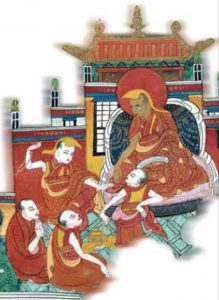 宗喀巴大師在一生中擔任了許多角色——根據傳統傳記記載,至少有33種。他也擁有數個名稱。「傑仁波切」(Je Rinpoche)意為「尊貴之主」,是一個充滿敬意的尊稱。他的出家名為「洛桑札巴」(Lobsang Drakpa),意思是「清淨之心,著名之人」——「著名」一詞暗示著他的教法廣為流傳並深深利益眾生。而「宗喀巴」則意為「來自宗喀之人」,宗喀是東藏的一個地區,以洋蔥田與穿越該地的河流而聞名,也是他出生之地。
宗喀巴大師在一生中擔任了許多角色——根據傳統傳記記載,至少有33種。他也擁有數個名稱。「傑仁波切」(Je Rinpoche)意為「尊貴之主」,是一個充滿敬意的尊稱。他的出家名為「洛桑札巴」(Lobsang Drakpa),意思是「清淨之心,著名之人」——「著名」一詞暗示著他的教法廣為流傳並深深利益眾生。而「宗喀巴」則意為「來自宗喀之人」,宗喀是東藏的一個地區,以洋蔥田與穿越該地的河流而聞名,也是他出生之地。
宗喀巴大師極少提及自身的經歷。事實上,《我的修行生活之歌》(Je Rinpochey Nyamgur)——即他全集中唯一一部開誠布公談論自己修行歷程的著作——是他難得一見的自述。這些偈頌,很可能是在他於甘丹寺晚年十年間所寫,是我們目前所能見到最個人、最易親近的記錄之一,述說了這位對藏傳佛教有深遠影響的大師的一生修行與覺悟之路。
若您想深入了解宗喀巴大師的生平,可參閱本書《法王:宗喀巴大師圖像傳記》(King of the Dharma: The Illustrated Life of Je Tsongkapa)。本書長達近500頁,結合了傳統敘事與150幅源自歷史彩繪卷軸的圖像場景,生動描繪了這位精神導師的一生。圖文並茂地呈現了這位靈性大師的豐富人生與不朽遺產,如今仍指引著世界各地的學人與修行者。
我的心灵生活之歌 作者:宗喀巴大师 | 教学者:格西麦克·罗奇
毫不夸张地说,藏传佛教大师宗喀巴(1357–1419)是世上最伟大的佛教著述者。他留下了超过325部著作,总计超过12,000页,涵盖了整个佛教经典教学的范围。然而,在这些浩如烟海的著作中,《我的心灵生活之歌》尤为独特。这是他用自己的声音倾诉的唯一文本,回顾了自己走过的修行之路,并邀请他人同行。
这部短文也被称为Nyamgur —“个人修行之歌”,或Lam Rim Dudun,“菩提道次第简要呈现”。在短短几页中,宗喀巴大师勾勒出一条完整的修行路径,其基础并非抽象理论,而是他自身深厚的实修经验。而当宗喀巴写下一页文字时,往往蕴含着百页的深意 — 这些内容常常以让普通读者驻足良久的句式表达,以领悟其中的细致与精妙。据信,此文可能成书于他生命最后十年间的甘丹寺,其内涵凝聚了数世的修行智慧。
本教学围绕传统中所谓的“三士道”展开。下士之人追求未来世免于痛苦;中士之人寻求彻底断除痛苦;而上士之人则发愿承担责任,解救一切众生脱离苦海,无论他们身处何方。这些动机并非出于盲目信仰,而是出于诚实自省与理性思辨。这是一条建立于逻辑、慈悲与清明之上的道路。
宗喀巴大师传达的信息朴实却深邃:凡欲获得解脱者,必须先认清生命不止于此生,并对其走向负起责任。上士之人超越了对个人未来的关注,转而关注他众的痛苦 — 哪怕是未曾谋面的众生 — 并认定帮助一切有情是自己的使命。正是这种广阔的动机赋予了《我的心灵生活之歌》经久不衰的力量。本课程由格西麦克·罗奇亲授,使这部珍贵文本的深意得以鲜活呈现。
若你准备好更深入探索道次第,还有几乎无限精妙的著作等待着你去阅读和领悟。我们推荐格西麦克历时十四年的《菩提道次第》课程教学 — 可在知识库网站上免费获取。
与具格善知识共学此简短却完整之作,将为你打开通往世间最深邃修行道之一的大门:一条以慈悲与智慧为引导的生活之道,正如西藏最伟大的上师所亲身实践与传授的那样。
视频
是一个视频播放列表,从最近发布的课程开始。只需点击观看下一个视频,即可观看本系列的其他视频。
音频
谁是宗喀巴大师?
 宗喀巴大师(1357–1419)是佛教历史上最伟大的思想家、著述者与实修者之一。他亲笔留下的著作超过325部,总页数超过12,000页,涵盖了显密佛法的所有主要课题。他的著作以严密深邃著称 — 有人说他的一页文字,往往蕴含着百页内容的深意,每一行都需我们反复沉思,方能体会其微妙之处。
宗喀巴大师(1357–1419)是佛教历史上最伟大的思想家、著述者与实修者之一。他亲笔留下的著作超过325部,总页数超过12,000页,涵盖了显密佛法的所有主要课题。他的著作以严密深邃著称 — 有人说他的一页文字,往往蕴含着百页内容的深意,每一行都需我们反复沉思,方能体会其微妙之处。
然而,宗喀巴不仅是位学者,他同时也是一位大师级的修行者,深入实践了来自佛教发源地—古印度—所流传下来的数千条教法。在该传统留下的近5000部古典经论中,无论是此前还是此后,几乎无人能在理解与整合层面与之比肩。
 在他的一生中,宗喀巴大师担任了许多角色 — 据传统传记记载,多达33种身份。他也有多个名称。“杰仁波切”(Je Rinpoche)意为“尊贵上师”,是一种敬称。他的出家法名为洛桑札巴(Lobsang Drakpa),意为“清净心、著名者” — 后者指的是他的教法广为流传,深深利益了无数众生。“宗喀巴”这个名字本身意为“来自宗喀之人”,宗喀是东藏的一个地区,以洋葱田与河流著称 — 那里正是他的出生地。
在他的一生中,宗喀巴大师担任了许多角色 — 据传统传记记载,多达33种身份。他也有多个名称。“杰仁波切”(Je Rinpoche)意为“尊贵上师”,是一种敬称。他的出家法名为洛桑札巴(Lobsang Drakpa),意为“清净心、著名者” — 后者指的是他的教法广为流传,深深利益了无数众生。“宗喀巴”这个名字本身意为“来自宗喀之人”,宗喀是东藏的一个地区,以洋葱田与河流著称 — 那里正是他的出生地。
宗喀巴大师极少写到自己。事实上,《我心灵生活之歌》 — 又名杰仁波切的修行之歌(Nyamgur) — 是他全集中唯一一部公开讲述自己修行之路的作品。这些偈颂大约写于他生命最后十年在甘丹寺时期,是我们所拥有的最个人化、最易于亲近的文献之一,而这位大师的教法影响了藏传佛教数百年之久。
若你想更深入了解他的生平,可阅读这本完整传记:《佛法之王:宗喀巴大师图像传记》。此书长达近500页,结合了传统叙述与150幅描绘他一生的彩绘唐卡画面,将他的一生展现得生动详尽。这是对一位精神导师的深刻图文画像,其影响力至今仍在全球弟子中延续传承。
A Song of My Spiritual Life by Je Tsongkapa | Taught by Geshe Michael Roach
Without exaggeration, we can say that the Tibetan master Je Tsongkapa (1357–1419) was the greatest Buddhist writer who ever lived in this world. Over 325 works – totaling more than 12,000 pages – of his writings survive, covering the entire range of classical Buddhist teachings. And yet, among these countless volumes, A Song of My Spiritual Life stands out. It’s the one place where he speaks in his own voice, reflecting on the path he walked and inviting others to follow.
This short work is also known as Nyamgur — a “song of personal experience” — or Lam Rim Dudun, “The Briefer Presentation of the Steps of the Path to Enlightenment.” In just a few pages, Je Tsongkapa outlines the full structure of the spiritual path, based not on abstract theory, but on his own deep practice. And when Je Tsongkapa writes a single page, it contains a hundred pages of deep ideas — often expressed in sentences that make us ordinary readers pause for many minutes, trying to grasp the detail and nuance he’s packed inside. This text, likely written during the final decade of his life at Ganden Monastery, distills lifetimes of insight into a few powerful verses.
The teaching is framed around what the tradition calls the “people of the three capacities”. Practitioners of lesser capacity want to avoid suffering in future lives; those of medium capacity seek a final end to suffering; and those of greater capacity take on the personal responsibility to free all beings from pain, wherever they are. These motivations unfold logically — not from blind faith, but from self-honesty and reasoned reflection. This is a path rooted in logic, compassion, and clarity.
Je Tsongkapa’s message is simple but profound: those who wish to be free must start with the recognition that life continues beyond this one, and take responsibility for its direction. The person of greatest capacity looks beyond their own future to the suffering of others — even those they can’t see — and accepts that helping all living beings is their personal mission. It is this vast motivation that gives A Song of My Spiritual Life its enduring power. This course, taught by Geshe Michael Roach, brings the depth of this rare text to life.
There are wondrous writings of almost infinitely more detail for you to enjoy, when you are ready to go deeper into the steps on the path. We reccomend 14 years of teachings by Geshe Michael on the steps to enlightenment — freely available here on The Knowledge Base website.
Studying this small but complete work with a qualified teacher opens a door to one of the most profound paths in the world: a way of life guided by compassion and insight, as lived and taught by Tibet’s greatest master.
Video
This is a video playlist starting with the first video in the playlist. Just click for the next video to see additional videos in the series.
Audio
Who Was Je Tsongkapa?
 Je Tsongkapa (1357–1419) was one of the greatest Buddhist thinkers, writers, and practitioners in history. Over 325 works survive from his hand — more than 12,000 pages in total — covering every major topic in both the open and secret teachings of Buddhism. His writings are famously dense and layered; it’s said that a single page from him contains the depth of a hundred, often requiring careful reflection to grasp the detail and nuance within each line.
Je Tsongkapa (1357–1419) was one of the greatest Buddhist thinkers, writers, and practitioners in history. Over 325 works survive from his hand — more than 12,000 pages in total — covering every major topic in both the open and secret teachings of Buddhism. His writings are famously dense and layered; it’s said that a single page from him contains the depth of a hundred, often requiring careful reflection to grasp the detail and nuance within each line.
But Je Tsongkapa was not just a scholar. He was also a master practitioner who engaged deeply with the thousands of original teachings preserved from ancient India — the birthplace of Buddhism. Of the nearly 5,000 classical texts from that tradition, no one before or since is said to have matched his level of understanding and integration of their contents.
 Throughout his life, Je Tsongkapa held many roles — at least 33, according to traditional biographies. He is also known by several names. “Je Rinpoche,” meaning “Precious Lord,” is a respectful title. His ordained name was Lobsang Drakpa, which translates as “Pure Mind, Famous One” — the latter referring to how widely his teachings spread and how deeply they helped others. The name “Tsongkapa” itself means “the one from Tsongka,” a region in East Tibet known for its fields of onions and the river that runs through it — his birthplace.
Throughout his life, Je Tsongkapa held many roles — at least 33, according to traditional biographies. He is also known by several names. “Je Rinpoche,” meaning “Precious Lord,” is a respectful title. His ordained name was Lobsang Drakpa, which translates as “Pure Mind, Famous One” — the latter referring to how widely his teachings spread and how deeply they helped others. The name “Tsongkapa” itself means “the one from Tsongka,” a region in East Tibet known for its fields of onions and the river that runs through it — his birthplace.
Je Tsongkapa rarely wrote about himself. In fact, the text A Song of My Spiritual Life — also known as Je Rinpochey Nyamgur — is the only place in his entire collected works where he speaks openly of his own spiritual journey. These verses, likely composed in the final decade of his life at Ganden Monastery, are among the most personal and accessible records we have of a figure whose contributions shaped Tibetan Buddhism for centuries.
For those interested in a deeper dive into his life, a full-length biography titled King of the Dharma: The Illustrated Life of Je Tsongkapa is available here. This work includes nearly 500 pages of traditional narrative, along with 150 scenes drawn from a historic series of color scroll paintings that depict his life in vivid detail. Together, they offer a rich visual and textual portrait of a spiritual master whose legacy continues to guide students around the world.
- Idims: 開啟金剛道之門:五所學院 第1課 (2025,美國亞利桑那州) - 21 5 月, 2025
- 《惡魔與天使的辯論》第 19 回:五房課程 1 (2025 年,亞利桑那州) - 12 5 月, 2025
- 開啟金剛道之門:五所學院 第1課 (2025,美國亞利桑那州) - 6 5 月, 2025



